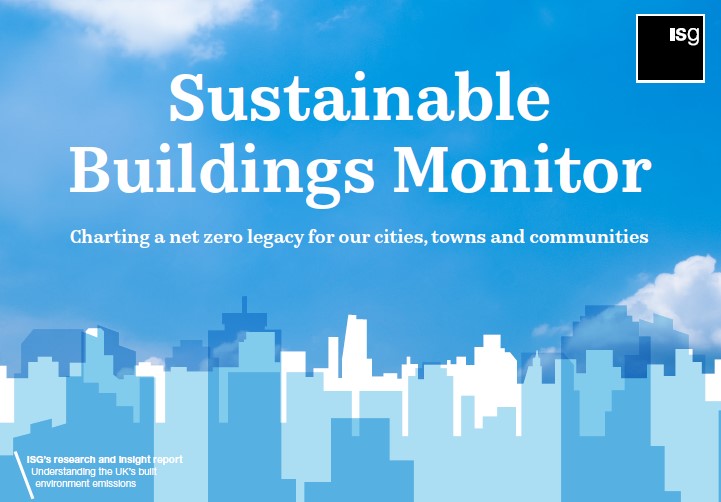Sustainable Buildings Monitor
Contents |
[edit] Introduction
In May 2021, the construction services company ISG published the Sustainable Buildings Monitor. The report examines the range of carbon emissions created by the operation of non-residential buildings in different regions of the UK. The research was conducted by the Centre for Economics and Business Research (CEBR) on behalf of ISG.
[edit] Findings
CEBR used publicly available information to set out regional estimates of the emissions and energy consumption of commercial buildings to assess the scale of the net-zero challenge. The report concluded that all regions have a significant distance to travel to achieve carbon neutrality by 2050.
[edit] Regional highs and lows
Analysis showed that the South West is the least energy intensive while Scotland is the most energy intensive. Scotland’s high levels of consumption were linked to its temperatures and its native industries.
Regions including London and the South-East, with a higher reliance on electricity, would perform marginally better in 2021 due to the changes in electricity carbon emission factors.
[edit] Performance factors
A significant factor in building performance is related to the maintenance regime and optimisation of building services. Data suggested that poorly performing building services account for a significant percentage of energy use and emissions production.
Also, the effect of sector clustering in preferential locations that provide commercial advantage, for example access to transport hubs, a highly skilled local workforce or abundant energy supplies also contributed to regional variances.
[edit] Innovative sectors
The report’s industry analysis highlighted how some of the UK’s most important sectors are embracing innovation. Education and healthcare were recognised for their commitments to moving towards zero carbon goals. Data centres were also acknowledged as innovators in terms of energy usage.
[edit] Standardising data
One of the most significant findings revealed an inherent challenge - the availability, timeliness, quality and inconsistency of data - highlighting the need for a uniform and transparent process for benchmarking and performance measurement. ISG sees standardised data as pivotal in the fight to reduce carbon emissions.
[edit] Related articles on Designing Buildings Wiki
- Building maintenance.
- Building services.
- Building services maintenance contractors’ role in reducing carbon emissions
- Net zero carbon 2050.
- Renewable energy.
- Scotland publishes plans to reach net zero targets with Heat in Buildings Strategy.
[edit] External resources
Featured articles and news
One of the most impressive Victorian architects. Book review.
RTPI leader to become new CIOB Chief Executive Officer
Dr Victoria Hills MRTPI, FICE to take over after Caroline Gumble’s departure.
Social and affordable housing, a long term plan for delivery
The “Delivering a Decade of Renewal for Social and Affordable Housing” strategy sets out future path.
A change to adoptive architecture
Effects of global weather warming on architectural detailing, material choice and human interaction.
The proposed publicly owned and backed subsidiary of Homes England, to facilitate new homes.
How big is the problem and what can we do to mitigate the effects?
Overheating guidance and tools for building designers
A number of cool guides to help with the heat.
The UK's Modern Industrial Strategy: A 10 year plan
Previous consultation criticism, current key elements and general support with some persisting reservations.
Building Safety Regulator reforms
New roles, new staff and a new fast track service pave the way for a single construction regulator.
Architectural Technologist CPDs and Communications
CIAT CPD… and how you can do it!
Cooling centres and cool spaces
Managing extreme heat in cities by directing the public to places for heat stress relief and water sources.
Winter gardens: A brief history and warm variations
Extending the season with glass in different forms and terms.
Restoring Great Yarmouth's Winter Gardens
Transforming one of the least sustainable constructions imaginable.
Construction Skills Mission Board launch sector drive
Newly formed government and industry collaboration set strategy for recruiting an additional 100,000 construction workers a year.
New Architects Code comes into effect in September 2025
ARB Architects Code of Conduct and Practice available with ongoing consultation regarding guidance.
Welsh Skills Body (Medr) launches ambitious plan
The new skills body brings together funding and regulation of tertiary education and research for the devolved nation.
Paul Gandy FCIOB announced as next CIOB President
Former Tilbury Douglas CEO takes helm.























